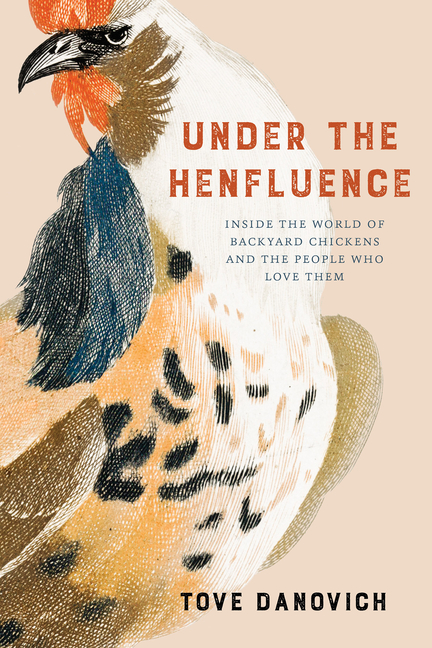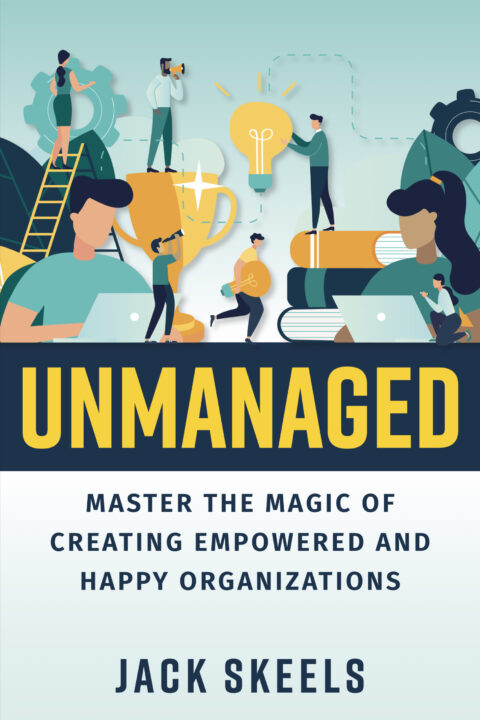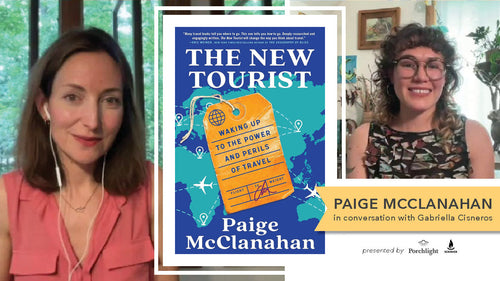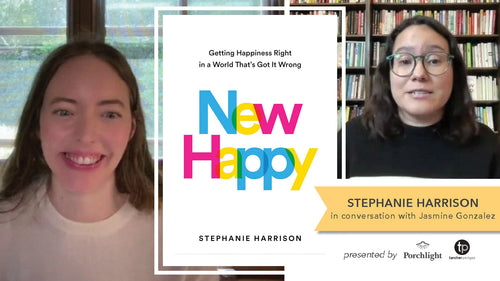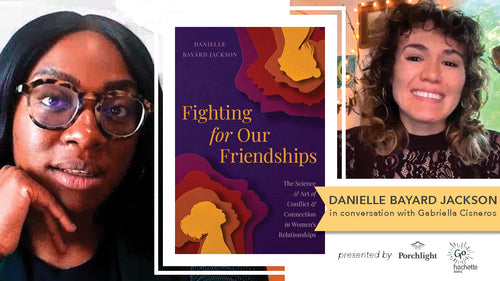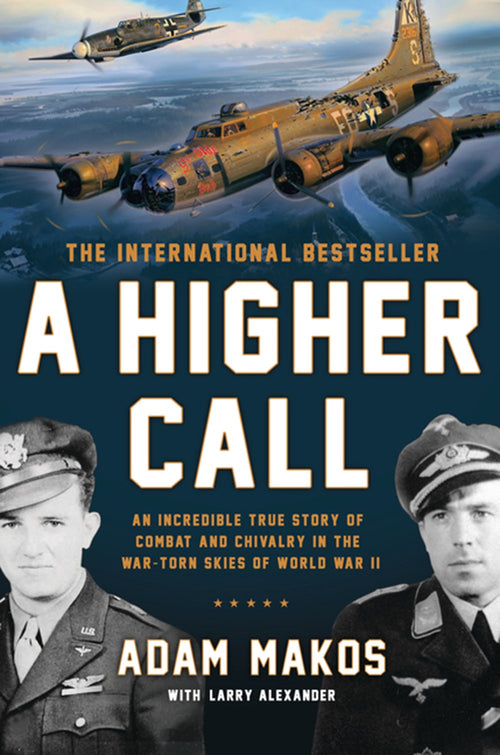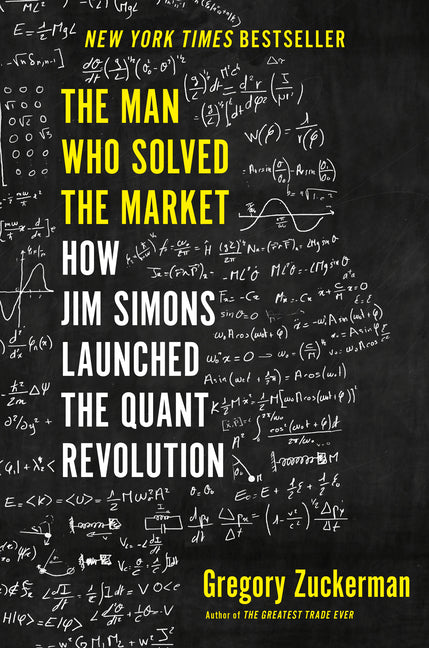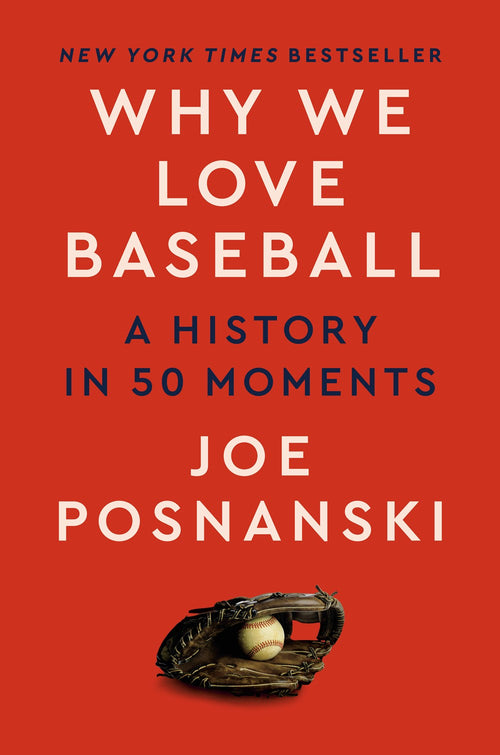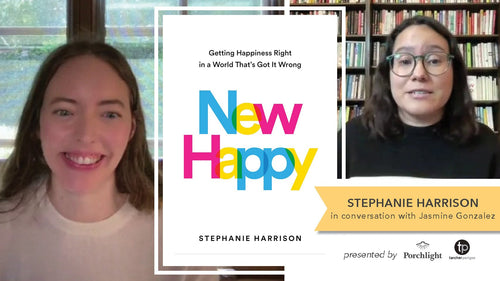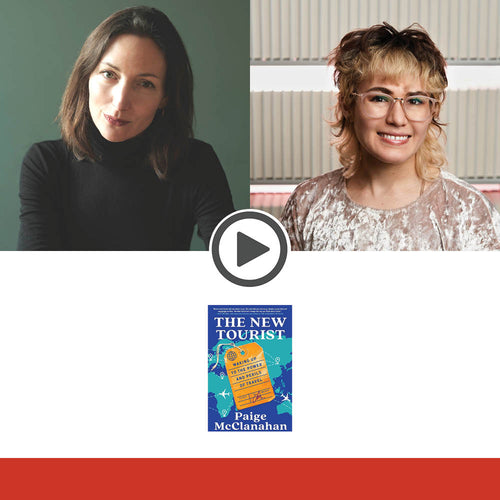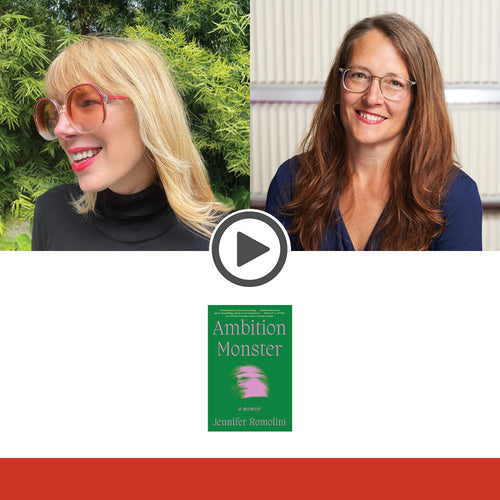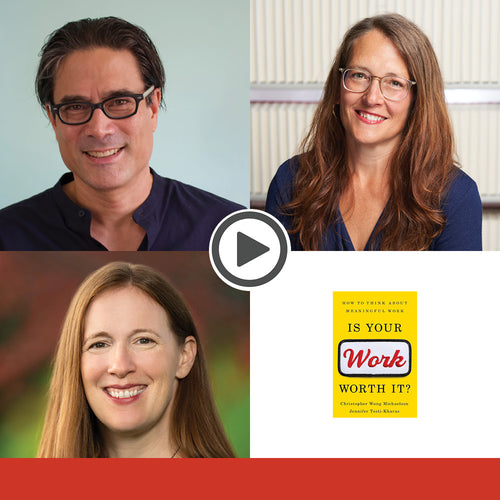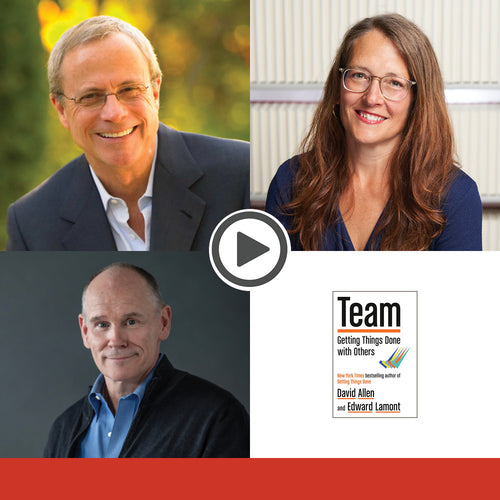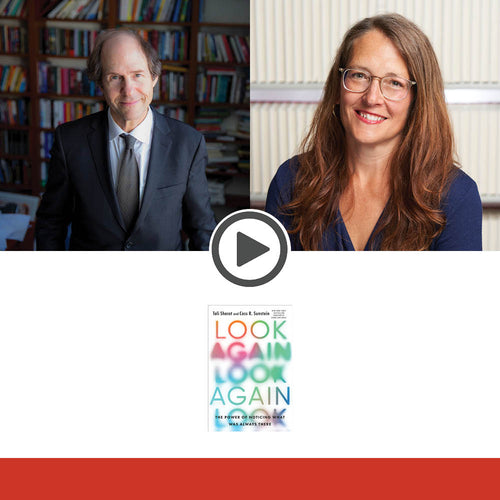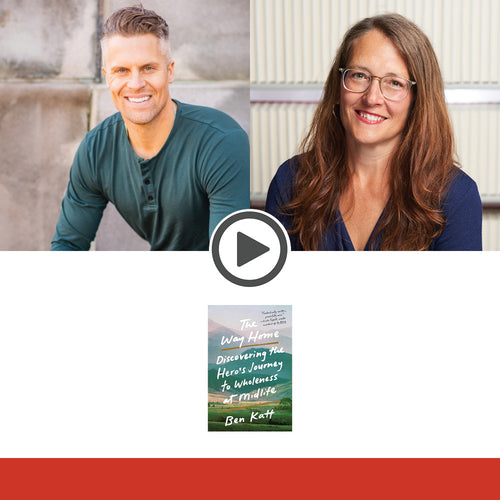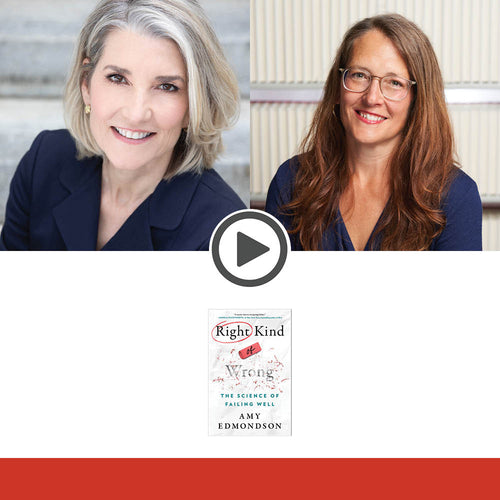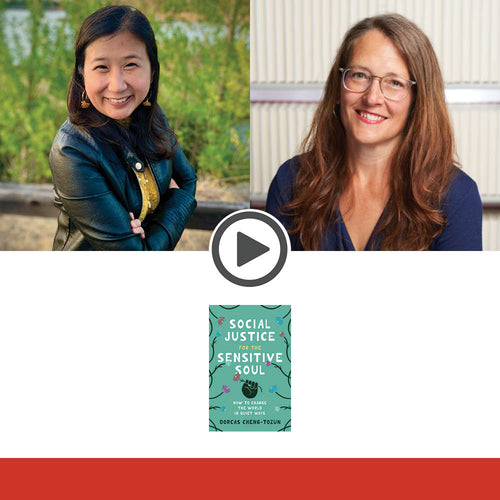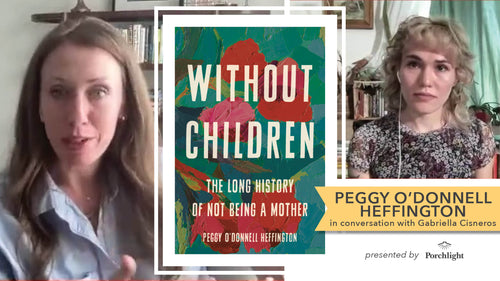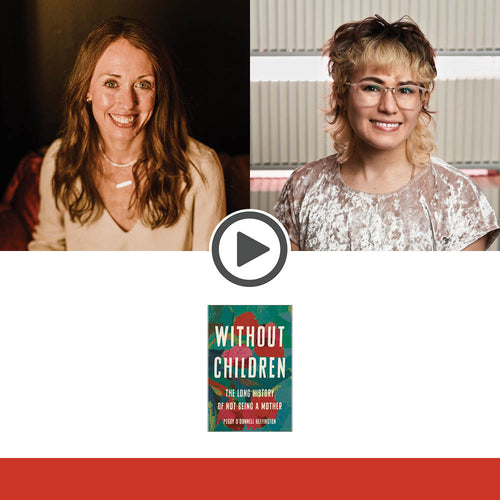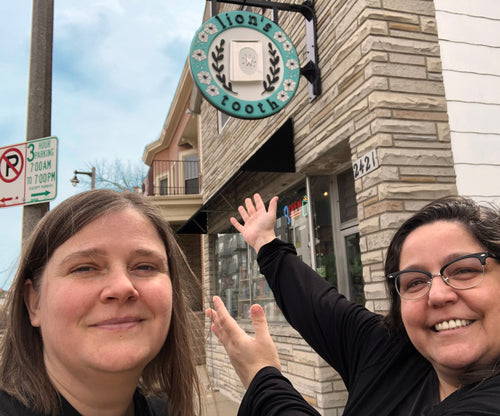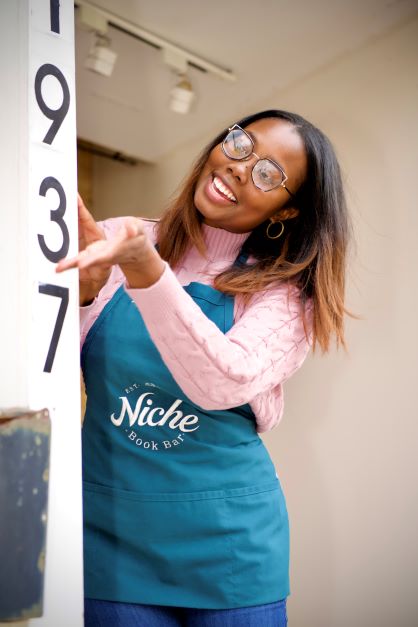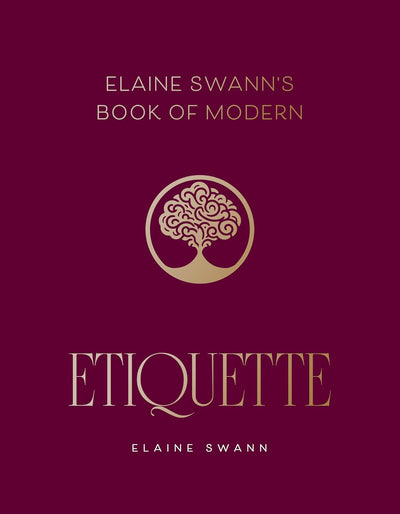A Q&A with Tove Danovich
Before reading this book, I did not think much about the lives of chickens. Yes, I do purchase local eggs and prefer brown to phosphorescent white, but that was the extent of it. I always thought chickens were interesting and the healthiest meat choice to eat if I were to eat any meat at all. And I know a few people who have chosen to raise chickens for fresh eggs—which seems like the thing to do because of how the industry and world is unfolding. After reading Tove Danovich’s debut book Under the Henfluence, it made me think a lot more about these creatures that are taken for granted, and it left me yearning to have my own flock.

Porchlight Book Company: When you first start on your chicken journey, you see them almost as a business transaction. You give them a nice home and they give you eggs. Once they stop laying eggs, you sell them to someone else—simple. But you end up seeing them as a part of your family. What was that transition like, and how did you form that closer connection?
Tove Danovich: Researchers like to say that friendship is a result of proximity and time spent together. When I brought my chicks home for the first time, they spent their first month in a plastic storage tote in the bathroom ten feet from my office. I went in there a lot. Not just because I was responsible for keeping them alive but because watching an animal learn and become who they are as adults is really addictive and fascinating. Chicks grow so fast that it seemed like they were doing something new every day and I didn’t want to miss it. One of the first delights was when I let them out in the backyard for the first time. My chick Betty found an earwig and started cheeping and running around with it hanging out of her mouth. This prompted the others to run after her and try to grab it. It was like watching a game of chicken football. Betty could have munched it down in secret, but instead she announced that she had this prize and incited the others to run after her. Why? I have no idea. But it’s so much fun to watch and chickens do it all the time, especially when young.
Before I got chickens, I liked them but I don’t think I was curious about them. To be curious about someone or something is to recognize that there’s more to them than meets the eye and that, perhaps, there are things about them that might always be unknowable! As I got to know more about my flock as individuals and chickens as a species, I couldn’t help but fall in love.
Porchlight Book Company: It is quite surprising how most people know nothing about the animals we receive most of our products from; cows, pigs, horses, and chickens. I myself never thought about how cows need to be pregnant in order to provide milk....it makes complete sense...just never put it together. What can consumers do to start reconnecting to the natural world and the origins of their everyday products?
Tove Danovich: These days, we live in an increasingly urbanized world. Most of us, whether adult or child, don’t have a lot of connection to the animals that we rely on for food. If we don’t know that cows have to have a calf in order to produce milk, we’re missing a huge piece of what it takes to make the dairy industry function. (Continually pregnant cows and male calves that are useless to the dairy industry.) If we think chickens are just bird brains without much going on, it’s easier to allow them to be bred and farmed in conditions that are inhumane. I know that not everyone has the time or inclination to start reading a lot about farming and farm animals (there are only so many hours in a day!) but a lot of this lack of knowledge comes from the fact that we treat animals a bit like food producing machines. They’re not. They’re animals just like us with needs and biological processes that are more similar to our own than they are different.
Porchlight Book Company: Seeing how hatcheries work and how many small male chicks’ (roos) lives are taken, do you think there is another way to save these birds that are merely born to be killed?
Tove Danovich: It’s a hard fact of backyard chickens that for every hen enjoying life in your garden, there’s a male chick that was killed at the hatchery. The egg industry is working on a way to tell if chicks are male or female while still developing inside of an egg. Some early versions are in use in Europe but the US egg industry hasn’t adopted them yet and hatcheries certainly haven’t. I have hope that this is on the horizon and would prevent the need for chicks hatched just to be sexed and then immediately killed if they’re males.
For now, there isn’t much people can do besides taking the ethos of “adopt don’t shop” into their backyard flocks. Chickens are always for sale somewhere. People post often lovely breeds on Craigslist or in Facebook groups and you can sometimes find hens at your local humane society. You won’t get to go through the process of raising chicks but the girls are just as funny and loving. There’s also a growing demand to rescue “spent hens” who are considered too old by the egg industry and are simply killed to make room for another batch of young ones. Groups like Hen Harbor, Second Hen’d, or Adopt a Bird are good places to start if you’re interested in this in the US. It’s very popular in the UK and Australia but still somewhat new here.
Porchlight Book Company: You write about your experience with 4-H programs. What is the benefit of programs like that, for both you and the youths who participate–and the outside world?
Tove Danovich: I loved getting to be in 4-H as a kid. I did it with my pet sheep and had to practice walking them on a halter and learn how to show them. I think we forge deeper relationships with animals—whether dogs and cats or farm animals—when we find an activity to do together. 4-H can definitely allow for that.
Often kids show these animals at the fair which can be one of the few times people might actually see chickens or cows or pigs up close. In the mid-1900s, we began intensifying agriculture and locking animals away in these giant warehouses where no one sees them until they’re processed into products rather than keeping them in the yard. I don’t think it’s an accident that animal welfare standards started going way down when that happened.
Porchlight Book Company: I found it moving and beautiful when you described how your once-traumatized chickens finally learned how to be chickens again and found their egg song. We do not realize how much we take from animals when we just look at them as food and not as individual beings. What do you think is the ideal way to live with farm animals while still getting what humans need?
Tove Danovich: Thank you so much for saying that. For most of human history, I think we had more of a partnership with the animals in our care. Now we’ve kind of separated them into food or pets and as the standards for the latter have gone way way up, the care for the former have fallen.
I think part of the problem is that we think we deserve to have animal products as a major part of our diets. Eggs and poultry are cheaper today than they were 50 years ago thanks to intensified agriculture and subsidies. We may not be paying for it but the animals are paying for it, the often poor and/or undocumented workers in these farms and slaughterhouses are paying for it, and the environment is paying for it between pollution from all this animal waste and carbon emissions. I want humans to all have enough to eat but maybe that enough doesn’t have to include “cheap” animal products. I think it would be a net good to raise fewer animals and treat them each better.
Porchlight Book Company: As a cat person and bird nerd, it gave me so much joy to read in your book that chickens actually purr… like really purr! In your book you mention multiple times that knowing if a chicken is happy can be quite difficult. You took in two hens from a battery farm, meaning they did not have the best life before they came home with you, and you witnessed so much change in them. They began to purr nonstop meaning they were happy in everything they do. Do you think you will continue to rescue battery hens, and do you think the industry will become more humane to these animals you have grown so fond of?
Tove Danovich: Thelma and Louise, my ex-batts were just a joy and I loved getting to give back to chicken-kind when they’ve given me so much. I will definitely be rescuing more hens in the future. I’m on book tour this spring but hoping things will calm down enough in the fall that I can add some more to the flock.
As for the industry, I hope so but it’s hard. Animal agriculture is a huge contributor to climate change. Lately there’s been a lot of talk about cutting down on red meat because of its huge carbon footprint but many people are turning to eating more poultry as a result. We already kill 60 billion of these birds every year worldwide for food. Going from eating one steak a week to five servings of chicken isn’t an improvement by any metric.
In the egg industry there has been a demand for cage-free eggs which is an improvement over keeping hens in cages their whole lives, but the birds still can’t do any natural behaviors and are cramped and kept inside a large warehouse. So there is progress but it’s slower than anyone would like. I could give so many other examples of things happening in animal agriculture that are bad for the animals, the humans that work there, and the environment. It’s not remotely Old MacDonald’s farm.
Porchlight Book Company: After experiencing chicken shows, which by the way had me thinking of the film Best in Show for chickens, do you think you will be entering your chickens anytime soon?
Tove Danovich: There’s actually an amazing documentary called Chicken People that I recommend to everyone. It’s a real documentary—not a mockumentary--about chicken shows and the people who raise chickens. You don’t need to be obsessed with chickens to think it’s fabulous and heartwarming and also very funny. Raising chickens for show is a whole different ballgame from having and appreciating chickens in all their beautiful forms. I’m more of a collector and appreciator than a breeder.
Porchlight Book Company: Are there any future projects of yours that we can look forward to?
Tove Danovich: I hope so! I have so many ideas both for nonfiction and children’s writing but nothing that’s close to finished yet. I love writing about animals and our relationships to them and I think it’s very likely that you’ll be seeing another book (or two or three or four…) from me in the future. Until then, I’m on all kinds of social media and you can follow my flock’s adventures @bestlittlehenhouse.
About Under the Henfluence
An immersive blend of chicken-keeping memoir and animal welfare reporting by a journalist who accidentally became obsessed with her flock.
Since first domesticating the chicken thousands of years ago, humans have become exceptionally adept at raising them for food. Yet most people rarely interact with chickens or know much about them. In Under the Henfluence, culture reporter Tove Danovich explores the lives of these quirky, mysterious birds who stole her heart the moment her first box of chicks arrived at the post office.
From a hatchery in Iowa to a chicken show in Ohio to a rooster rescue in Minnesota, Danovich interviews the people breeding, training, healing, and, most importantly, adoring chickens. With more than 26 billion chickens living on industrial farms around the world, they’re easy to dismiss as just another dinner ingredient. Yet Danovich’s reporting reveals the hidden cleverness, quiet sweetness, and irresistible personalities of these birds, as well as the complex human-chicken relationship that has evolved over centuries. This glimpse into the lives of backyard chickens doesn’t just help us to understand chickens better—it also casts light back on ourselves and what we’ve ignored throughout the explosive growth of industrial agriculture. Woven with delightful and sometimes heartbreaking anecdotes from Danovich’s own henhouse, Under the Henfluence proves that chickens are so much more than what they bring to the table.

